Some progress at last
It has been a month since my last offering, and I am happily able to report some actual progress with the project to fit out Serchthrift! Over the last few weeks, as well as frantically scribbling past exam papers to keep my mind ticking over on the professional side (written exams have now been rescheduled for August 19th and 21st), I have not been idle on the boat. I dismantled the damn tent over several afternoons of work, although it seemed to come apart rather easier than it went up (I suspect gravity had something to do with that – thank you for inventing it, Isaac Newton). My biggest concern was whether I’d ever be able to get the ground pins, which held down the feet and bottom rail of the framework, out of the slatey shaley ground at the yard. After struggling with the first couple (the longer ones were 18 ins long), I managed to develop a technique using a pry-bar to get the first few inches, and then twisting using a Stillson wrench to extract the remainder. Only a small handful were bent, which was good. Eventually the beast was vanquished and tamed into several bundles of steel tubes, a large, heavy lump of tarpaulin, a pile of joining pieces and feet and a couple of cardboard boxes of bolts and bits. I advertised it for sale on Facebook at lunchtime one day and by the time I went to bed that night I had a deposit in the bank. It felt good to recover some of my funds for what turned out to be a poor investment. Admittedly, it did do the job for 8 months or so, but was not up to the Scottish winter and also did not create the nice working environment I had hoped for.
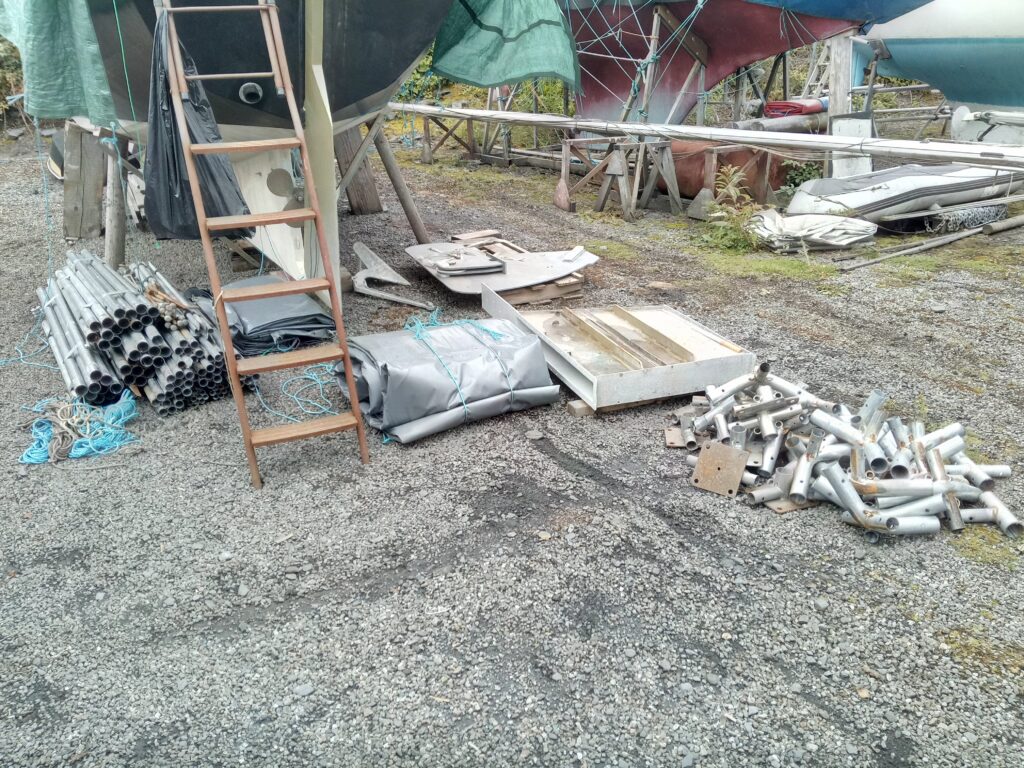
With that milestone achieved, I then had to prepare the boat for her short run across the water in due course, to her new home at Kilmelford. This consisted of two main sub-projects: the first was getting her watertight, and the second was getting the engine commissioned. In order to achieve the first, there were a couple of through hull openings with threaded pipes, which I believe were intended for a log and sounder, but in their present form project quite conspicuously into the interior, and do not fit my chosen transducers, so will, in due course, be cut out. In the meantime, I acquired during lockdown a couple of stainless screw caps which would seal them off (with the help of a bit of PTFE tape). There was also an opening in the port topside, which I fitted with a hull fitting and plumbed for a bilge pump. Finally, and the biggest job, was the fact that there is a 1.5 metre-long slot in the bottom of the boat for the centreboard. The centreboard and case came on a separate pallet when the boat was delivered to me, and certainly the latter would be required to be fitted in order to allow the boat to float. I had already prepared a gasket out of 4mm neoprene, and now the tent was out of the way the yard were able to bring in a crane to lift its not-insubstantial weight into the boat. After a bit of huffing and puffing, it was manoeuvred onto the corresponding top flange of the lower slot in the keel, and I set about fixing it down with 56 8mm bolts. Sometime during this process I slithered on the sloping hull plating and my left foot went into the section of bilge occupied by the (soon to be removed) mizzen mast step structure. This left little space for a large human leg, and it was only by deft manoeuvring that I managed to remove my weight from that one onto the other spare leg. Had I not done so, I think I would be wearing a plaster cast as I wrote this… As it was, I was left with a large area of scraped and bruised shin, which no doubt I shall bear as a mark of honour for some time yet.
With the centreboard case bolted down, I simply clamped a piece of ply to the top (which sits well above the waterline) and to this I bolted a bilge pump.
I was also able to finish connecting up the necessary systems to the engine, and was awaiting delivery of my electrics package so I could use a battery to start and test it. As I write, said electrics package still has not materialised (despite my having paid for it many weeks ago, and having been promised delivery, at the last enquiry, last Thursday. Anyway, seeing how this was going, I managed to borrow a battery from my friend Iain, who lives halfway between me and the boatyard. With the last piece of the propulsion puzzle in place, I was able to start up and run the engine, and happily it started easily and ran smoothly.
Finally, after my little episode in the bilge, I knocked up some temporary sole boards to make movement about down below slightly safer…
The next step, as I mentioned in my last post, was that I wanted to get some of the more complex steelwork on the foredeck completed by Mike, the boatyard owner and metal boatbuilder extraordinaire, before I moved her. My request for this (despite being mentioned in conversation many times over the last several weeks) still seemed to come as a surprise as my projected launch date drew nearer, and was left subject to any other commercial jobs which came in. However, happily, and presumably on the basis that they realised that my money was as good as anybody else’s, they moved Serchthrift into their shed exactly a week before my planned move. To Mike’s credit, once she was there, he and his son got cracking just as soon as I had confirmed with them the required scope of the work. The job consisted of cutting out the existing partner collar for the ketch rig’s mainmast, and reposition it (or a new one, as was actually the case) about 34cm further forward, and with a jaunty 6 degree forward rake, and make good the framework on the underside of the foredeck. I also asked for beds to be fitted for my anchor windlass, which, as you can see in the photos, is offset slightly to starboard to clear the foremast and control lines for the foresail where they lead aft, and its spurling pipe to take the chain cable below to the cable locker. The final part of the job was to weld on a nice stainless round-bar cap to the foredeck bulwarks, to finish them nicely without having to use a wooden capping rail, thus avoiding a potential rust trap. This they finished on Saturday last week, enabling me to go in and put some paint on the bare steel on Sunday before exposing it all to any dampness and thereby causing flash rust to form.
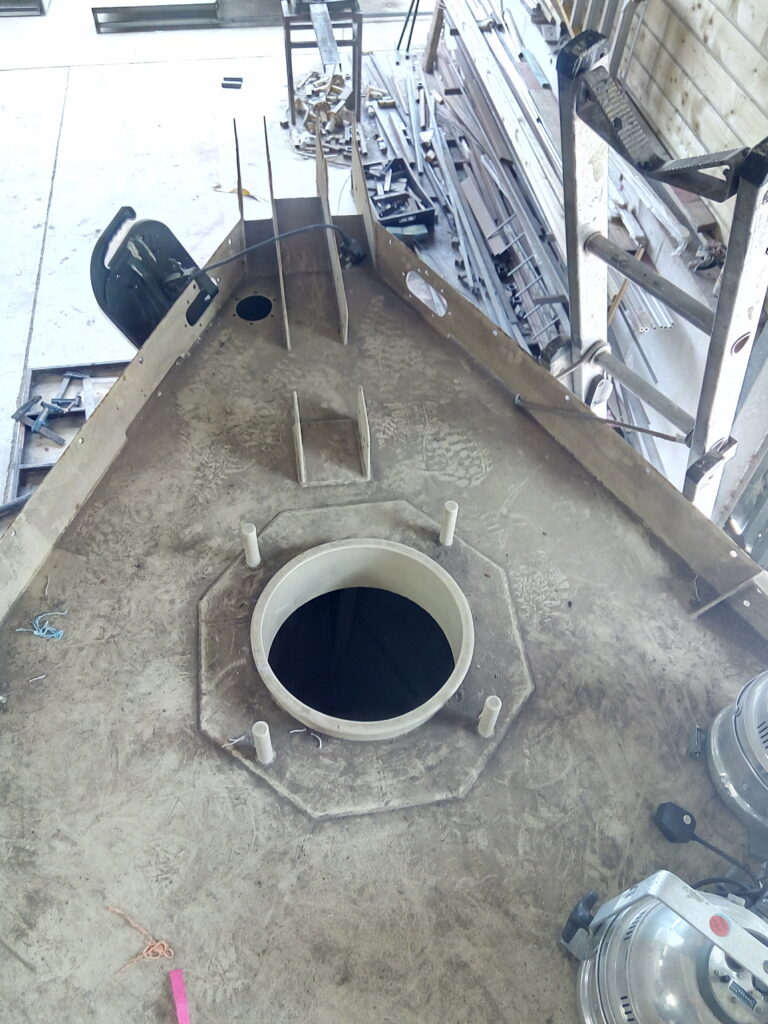
The previous arrangement 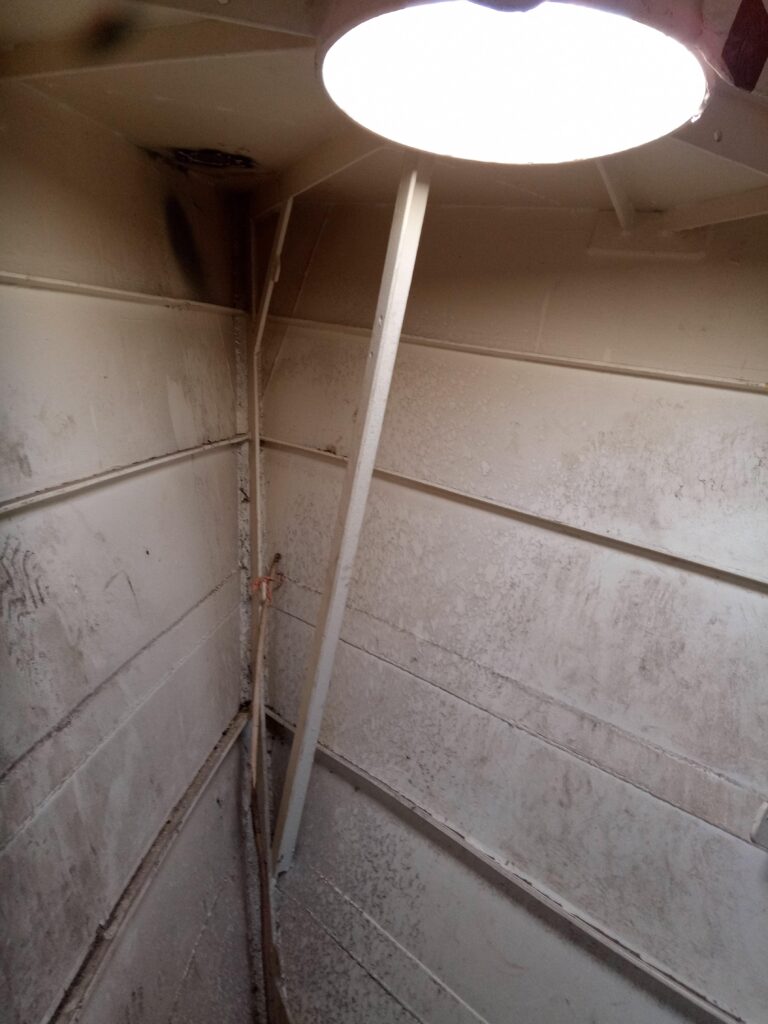
Somewhat bizarre framing underneath… 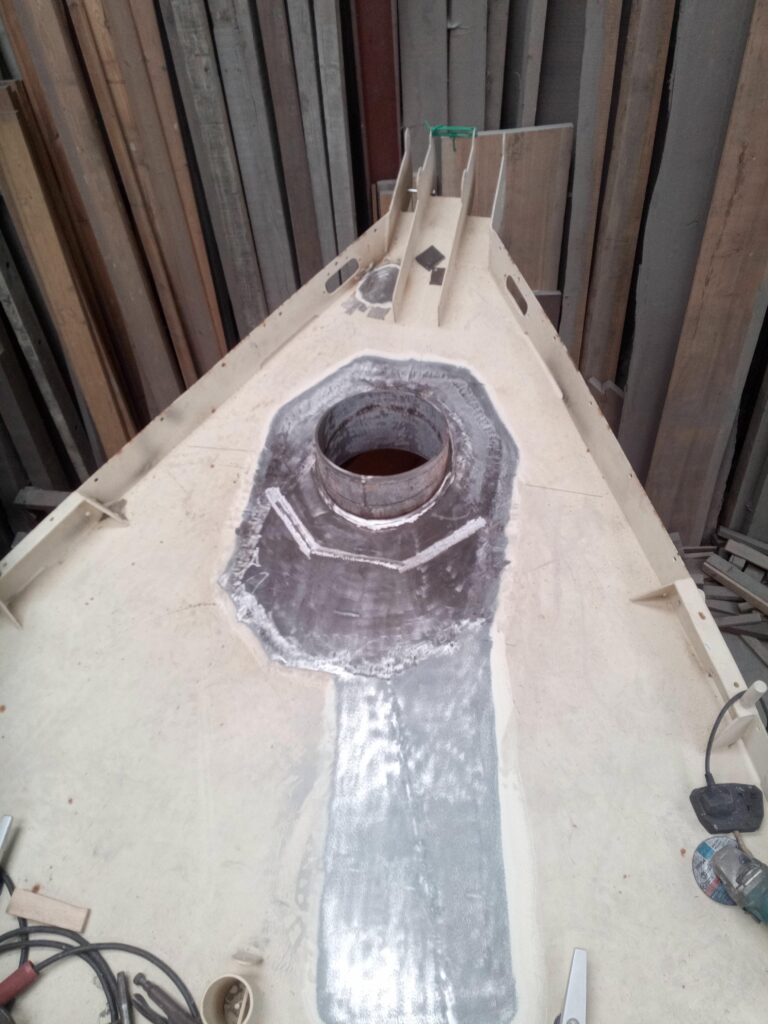
Progress after a couple of days 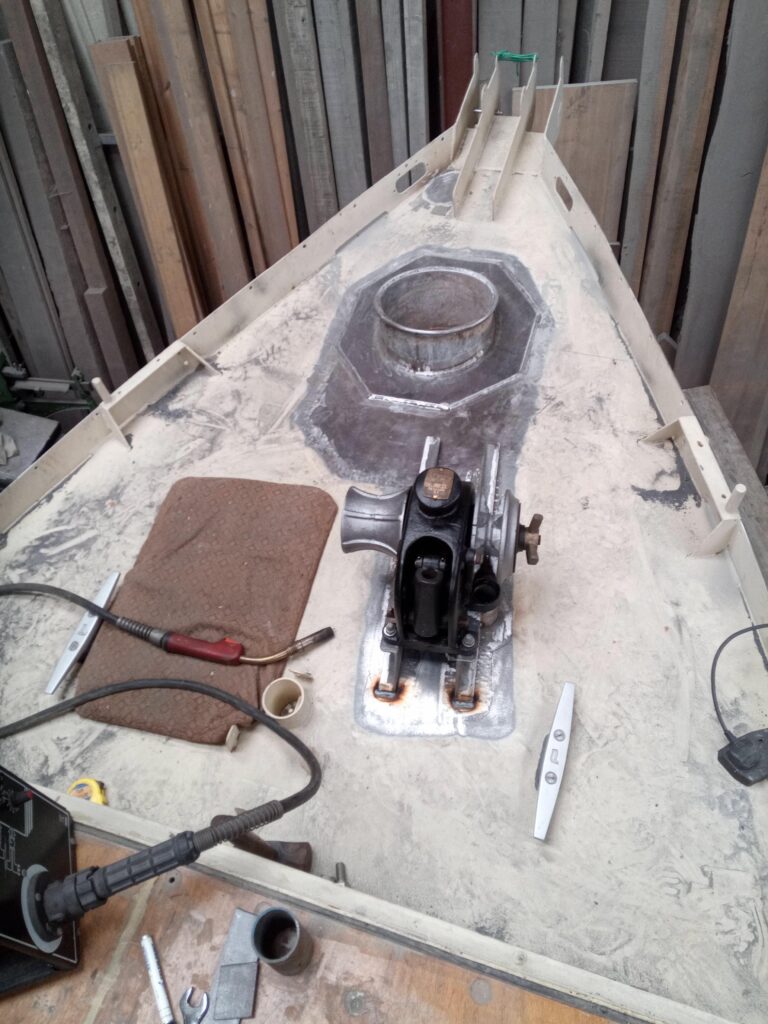
Windlass dry-fitted 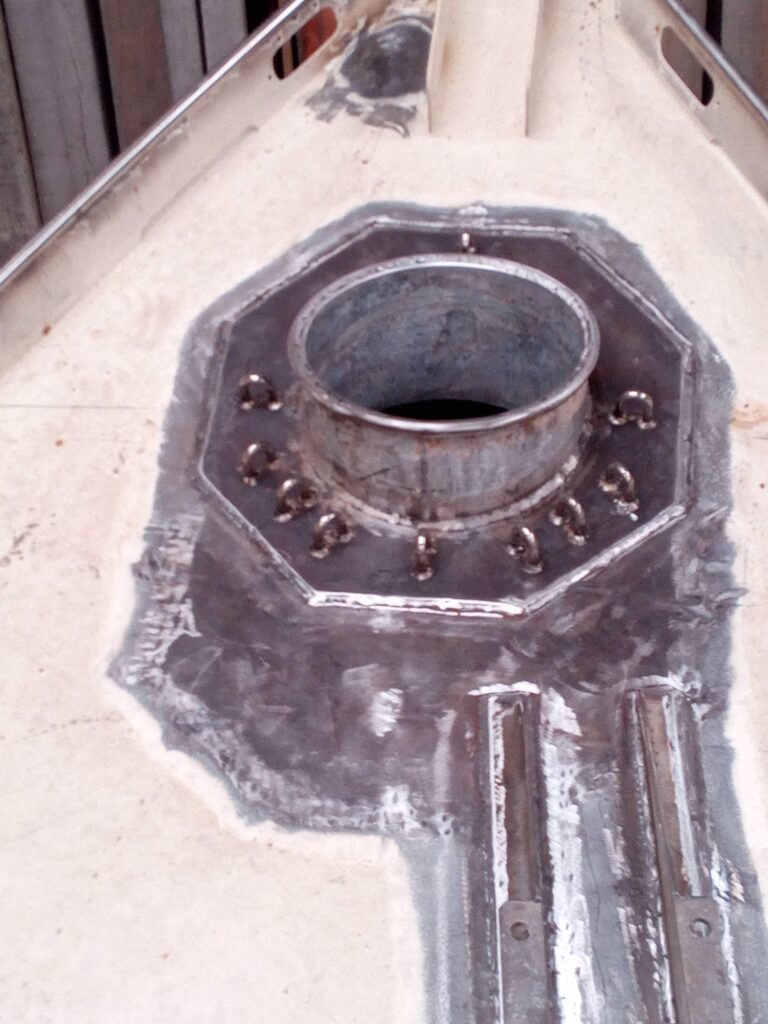
Foremast partners, with welded eyes for running rigging 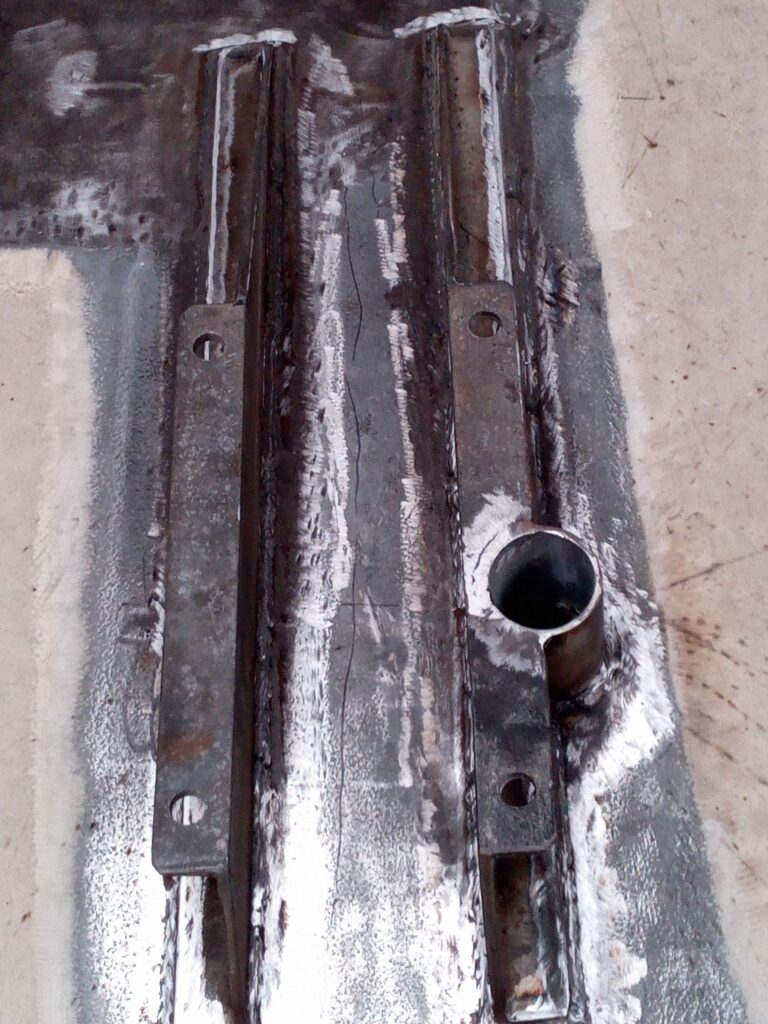
Windlass beds 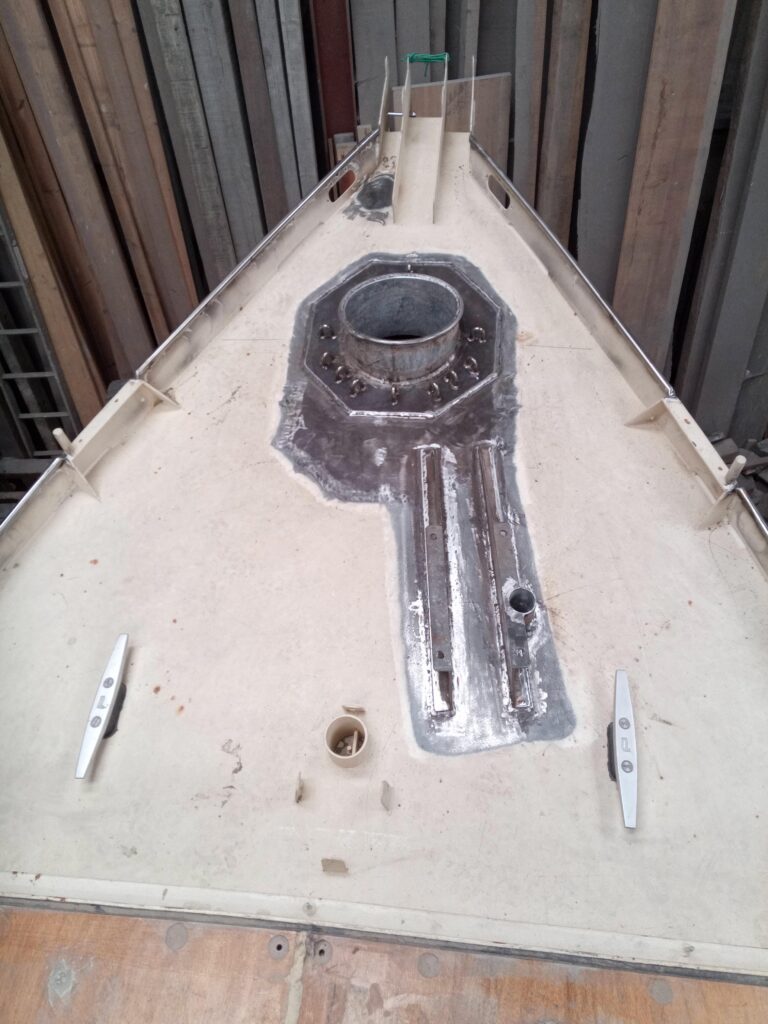
The finished job
What really pleased me about this job was that the only materials that were not lying around in the workshop were the links of stainless chain required for the rigging lead eyes around the partners. Mike even had a handy length of 11″ ID galvanised pipe for the collar, just lying around…
Of course, this schedule took me past the Friday deadline I had earmarked for launching and moving across to Kilmelford, but even that worked out nicely, as I had already had a call from the yard there, explaining that there was a delay their end clearing the path into the shed, so could I delay a few days?!
This almost brings us up to date, and yesterday morning I spent pacing up and down nervously (well, after completing a Navigation past exam paper) until the time came to head down to the boatyard for the Big Launch.
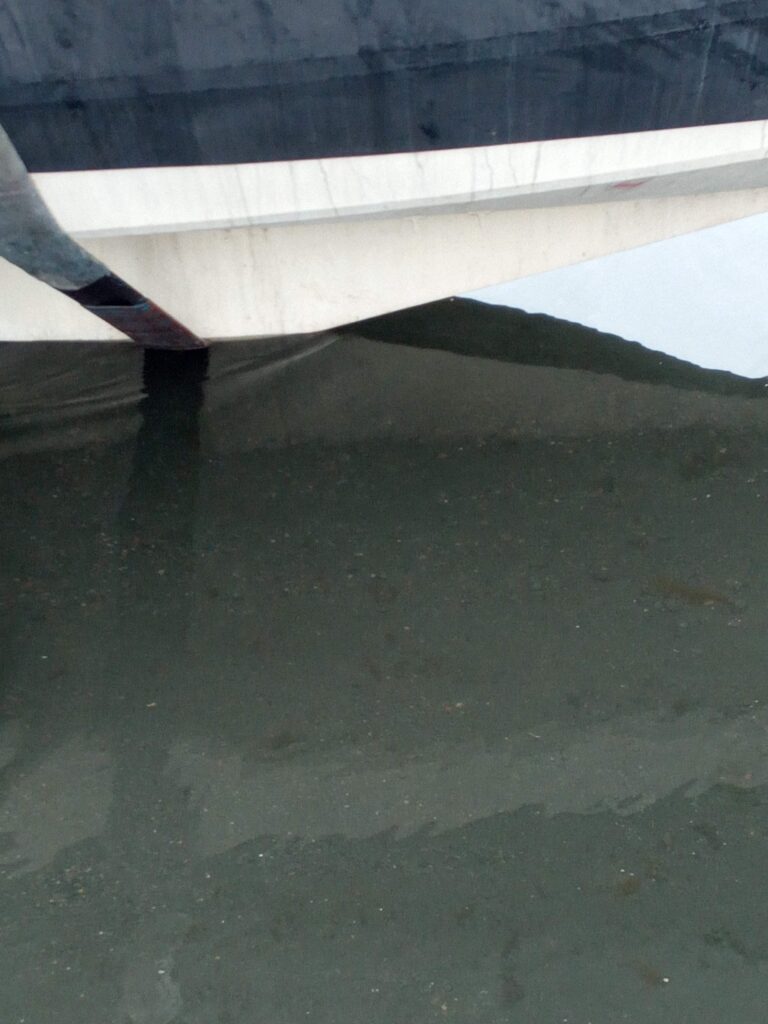
To say that everything went exactly to plan would be more than accurate. We came out of the shed shortly after 1430, just before half tide, and with the water level rising up the slipway rapidly. Serchthrift slipped without the slightest complaint into the water for the first time in her 32-year existence.
Once afloat (exactly on the painted waterline, which is unfortunate, as there are several hundred kilos to add yet!), I climbed on board and checked below for leaks. I was absolutely stunned and delighted to see that my efforts to make her watertight were entirely successful, and not a drip was issuing either from the centreboard case or the through-hulls. I opened the water intake seacock, turned on the battery, and pressed the start button. The engine started immediately, as if it had been running for hundreds of hours already. I put her in gear: the twirly thing twirled in both directions when asked. The stern gland didn’t drip. Eventually, I could put it off no longer. Mike slacked away the chain blocks some more, I put her into gear and out of the slings we came.
I had arranged with another local friend, Graeme (whose boat had been the obstacle in my path at Kilmelford last week, incidentally), to turn up in his RIB to escort Serchthrift across as a safety boat and tow-boat in case anything went wrong, so we briefly went to a mooring to wait for him. Once he had arrived, we slipped and headed out of Balvicar Bay into Seil Sound and towards Kilmelford.
As you can possibly imagine, the 7-mile passage was fairly uneventful. The wind was light, although started picking up towards the end, and we stayed on deck, as an empty steel hull with an un-boxed and uninsulated engine is quite a noisy place to be! It was just lovely to be out on the water however, and to get a taste of what is to come when she is completed.
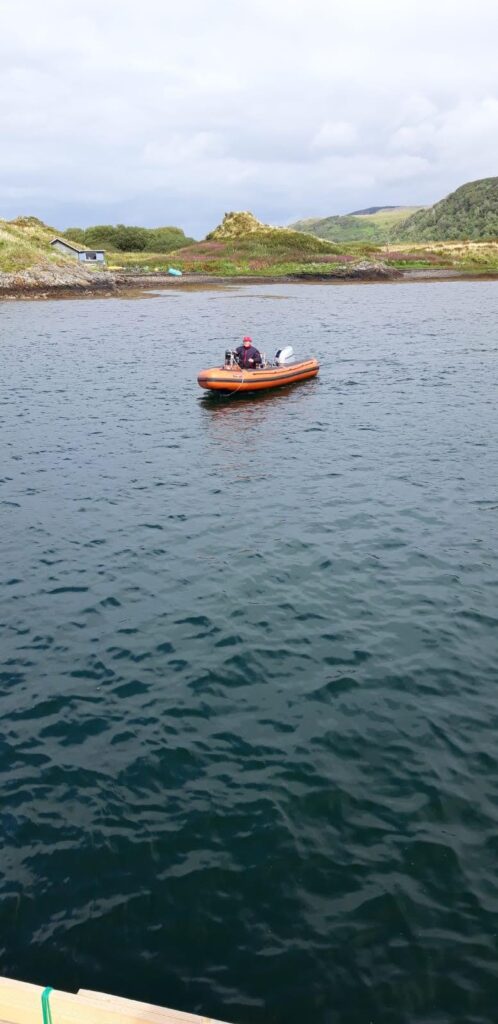
Graeme in the Safety Boat 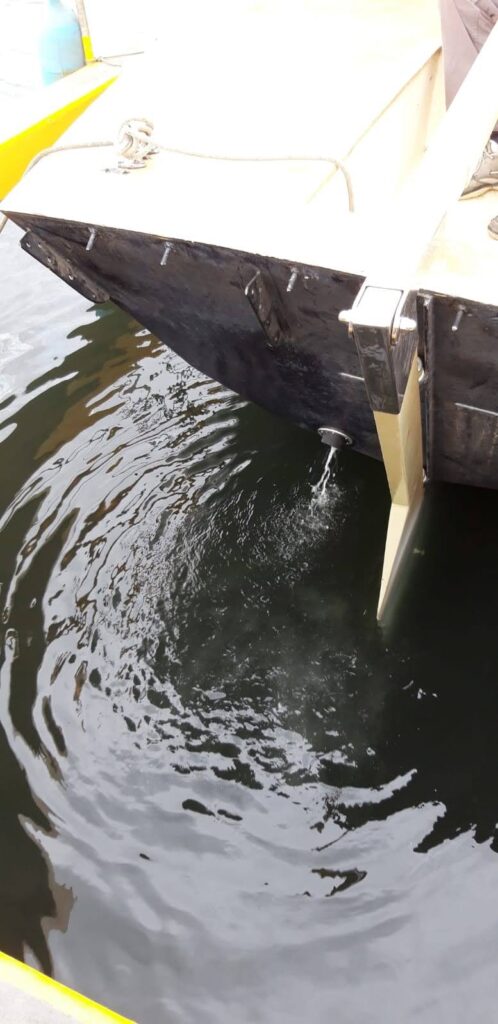
It goes! 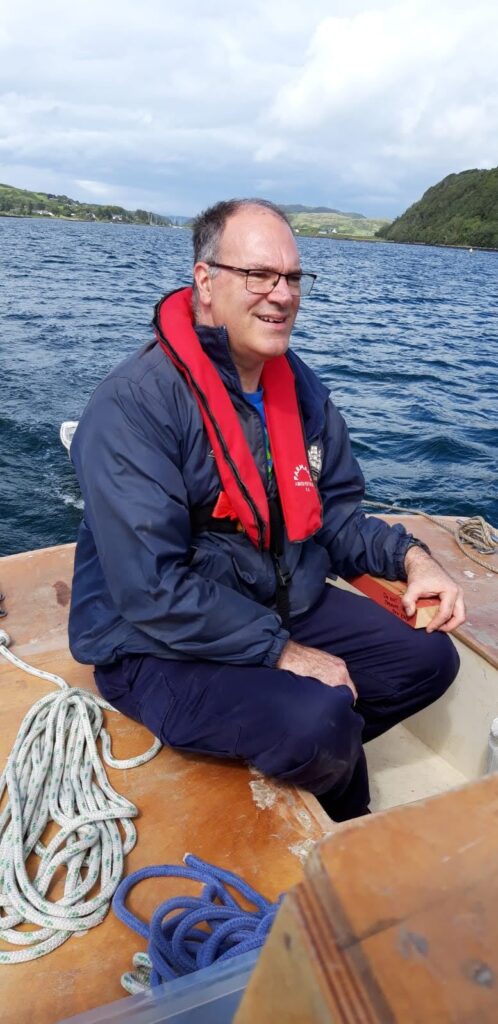
This is my happy-nervous face… 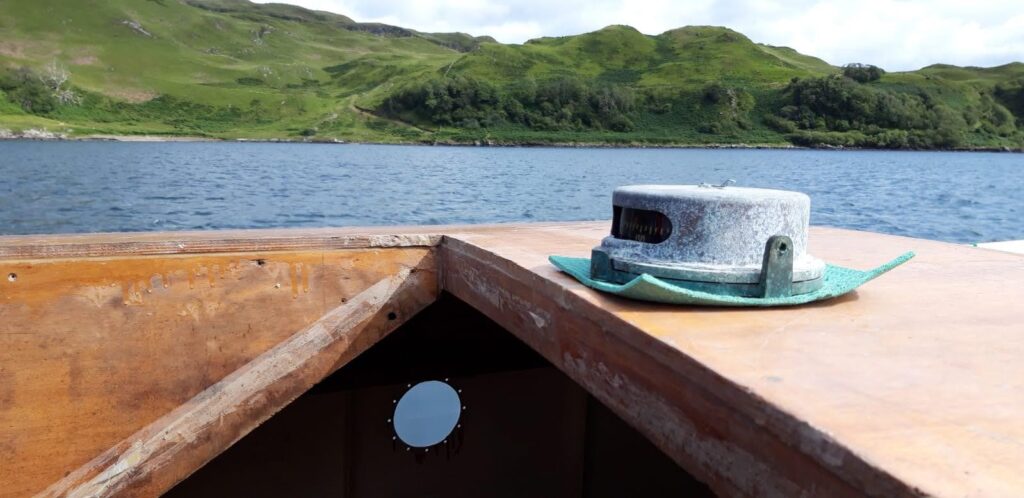
Compass on non-slip sponge. Extreme deviation… 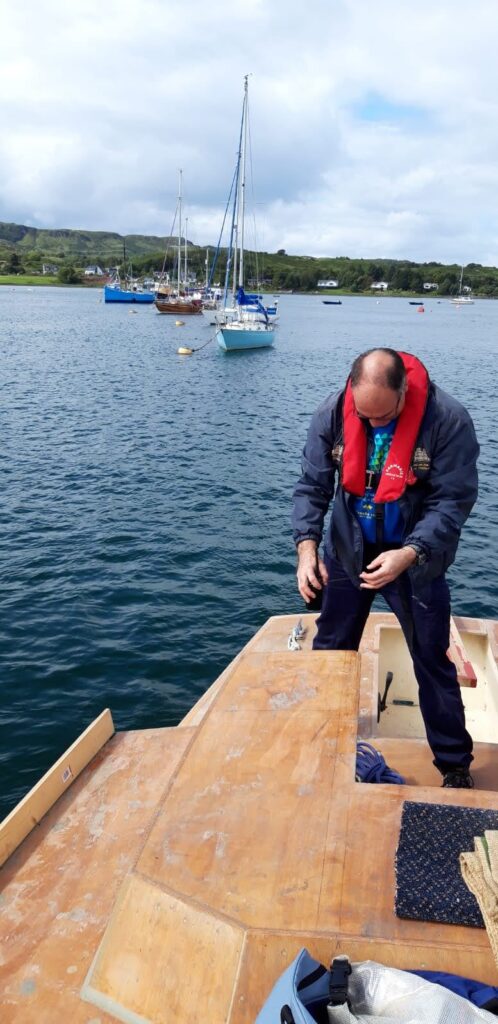
Doing something extremely nautical 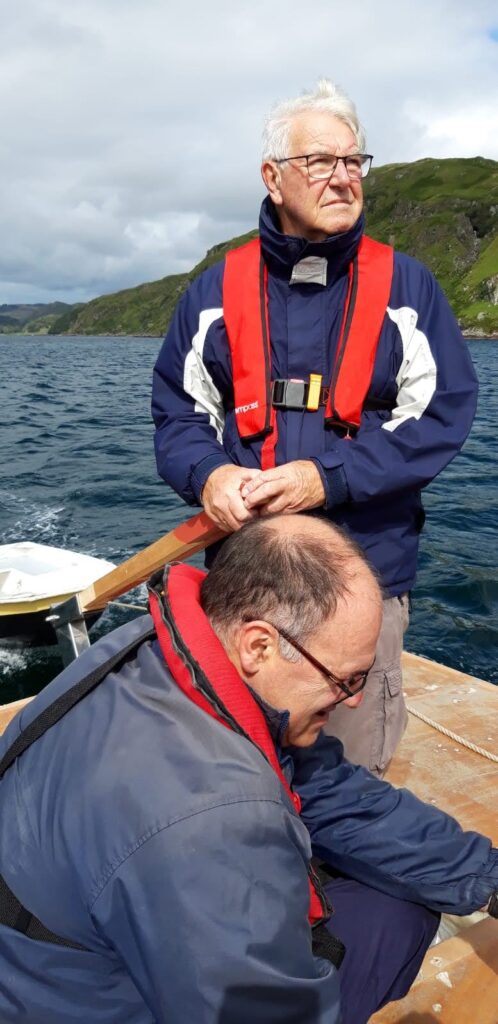
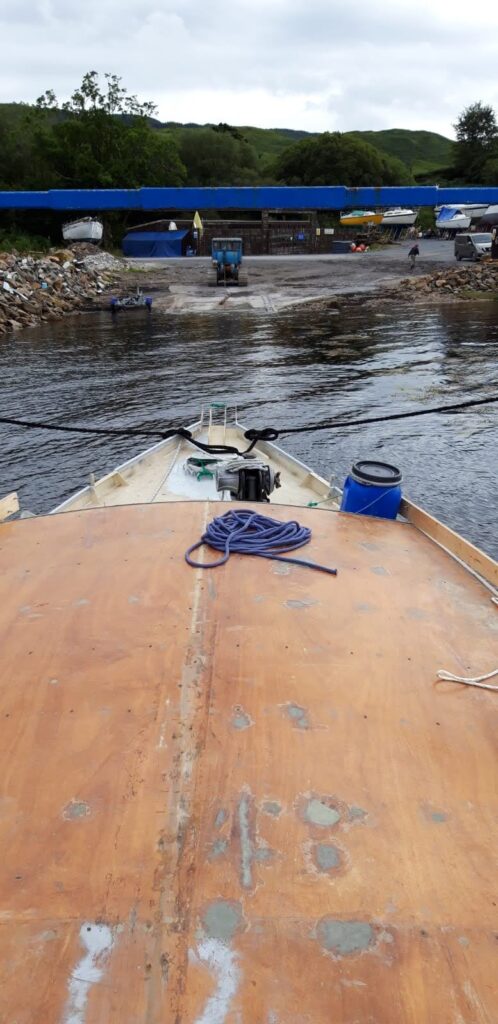
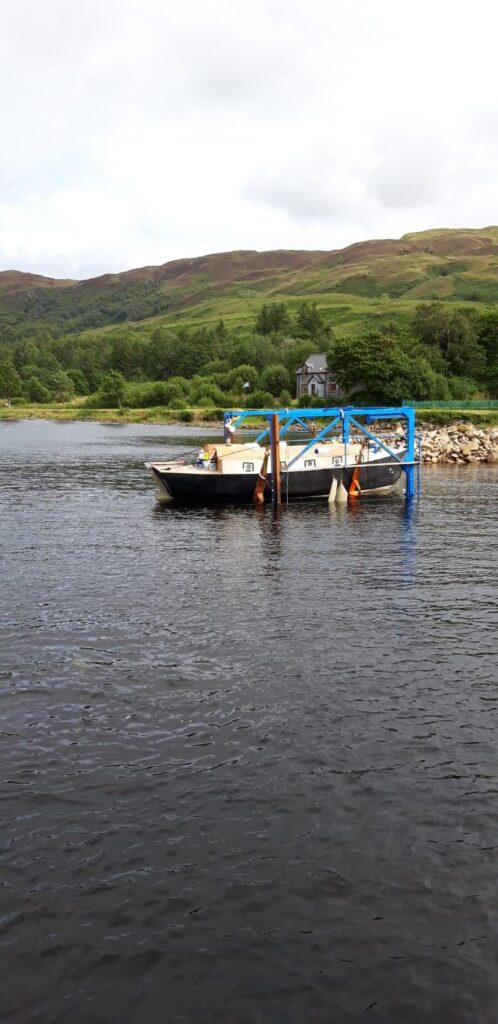
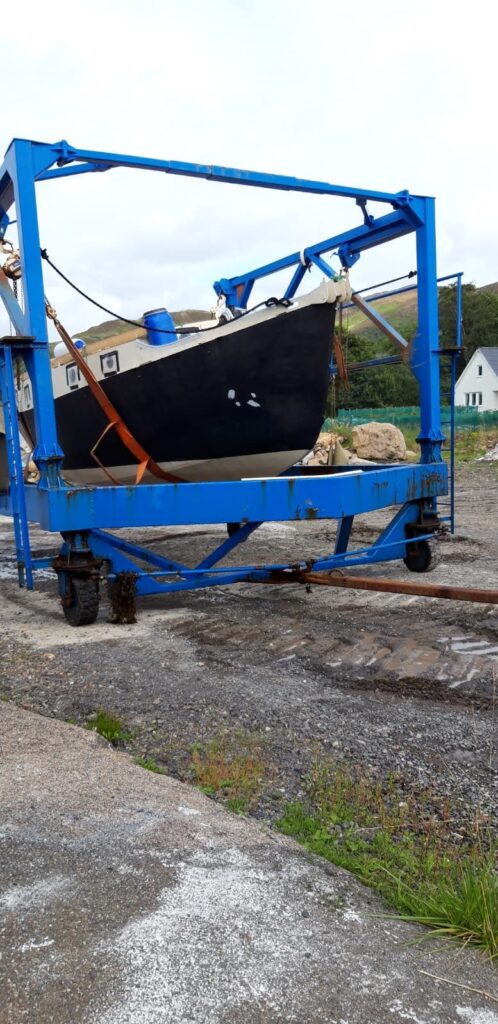
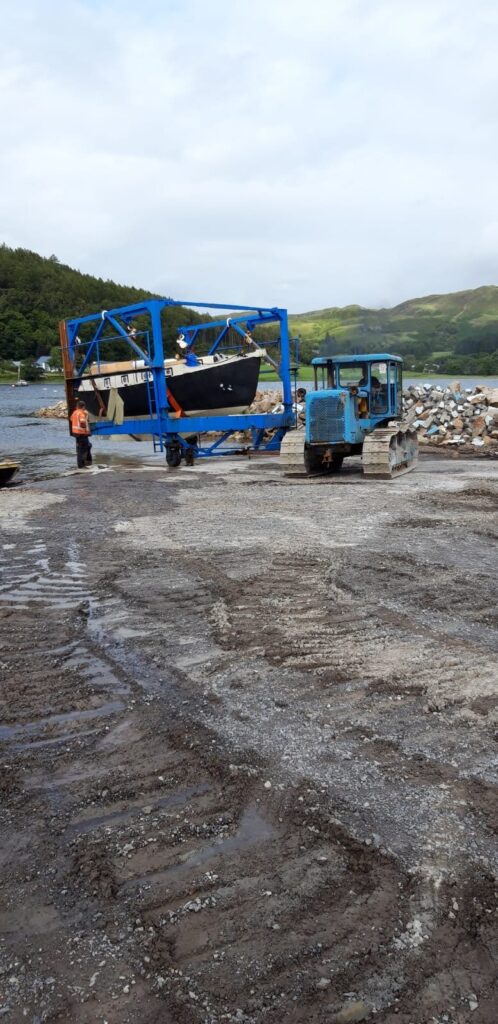
At around 1640, as we turned into the bay in which the boatyard is nestled, Graeme went ahead to check on where I could berth, and came back saying that the lads were still there, and I could go straight into the hoist. This was very fortuitous, as I didn’t really want to leave my un-antifouled and cathodically unprotected hull in the water overnight unless I absolutely had to, never mind that the forecast for Tuesday (today, as I write) was foul. So straight into the slings I went, stopped the engine and out she came.
They left her in the slings on the slipway overnight, as they were by this time anxious to get home for their tea, but at 0830 this morning we were getting ready to put her into her new home in the shed.
It took a while getting her cradle ready, and a little while more manoeuvring her into her position with the tractor, every now and then stopping to readjust the rollers on which the cradle sat, in order to “steer” it, but just before midday she was in position in her nice cosy corner, ready for the next exciting stages of her fit-out.
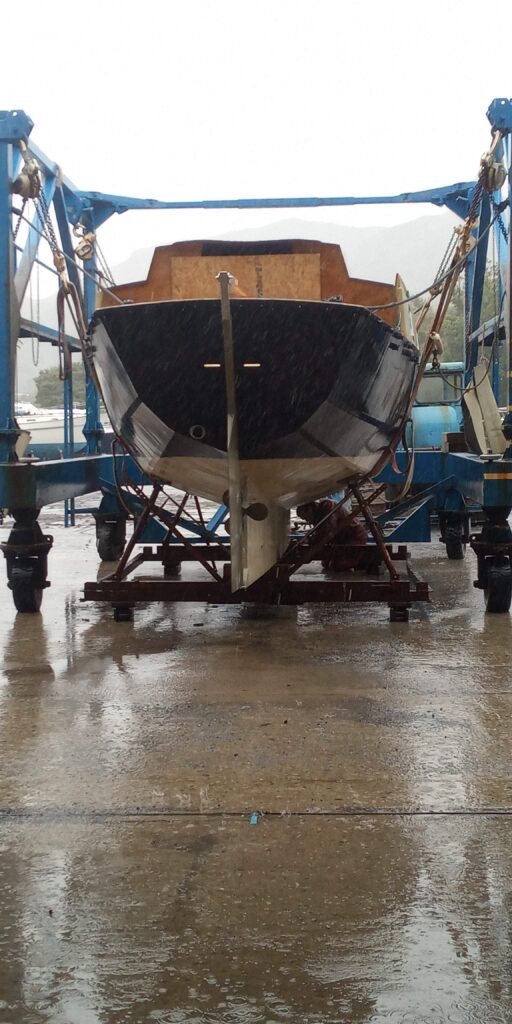
Fitting the cradle and levelling up 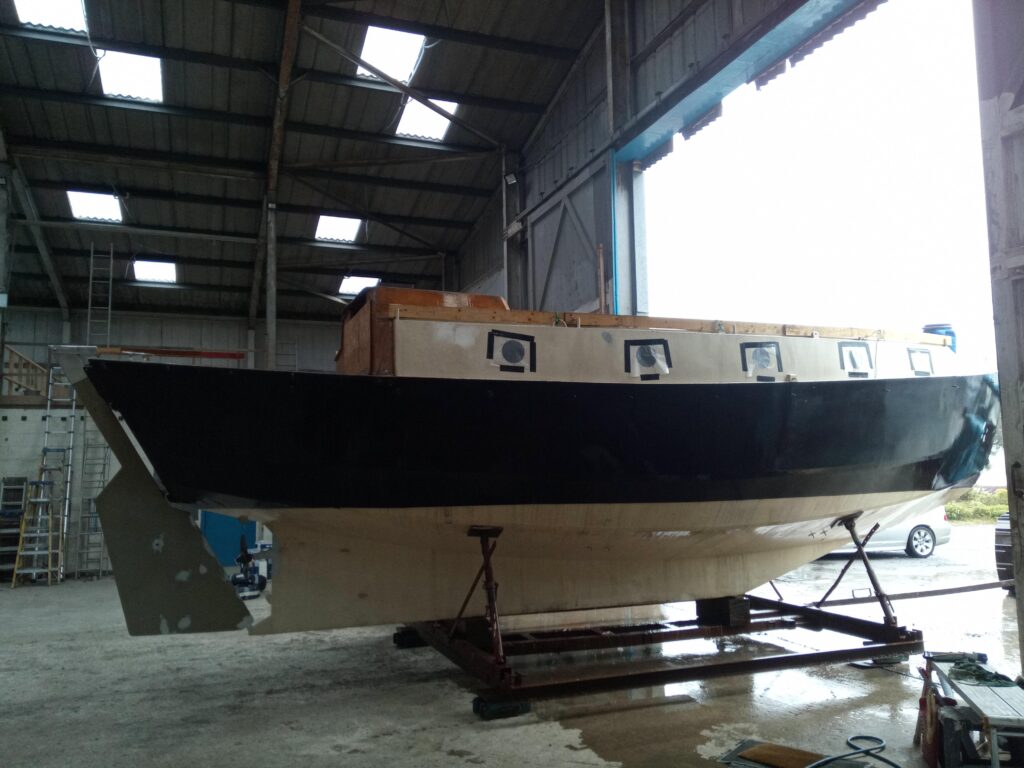
In she comes… 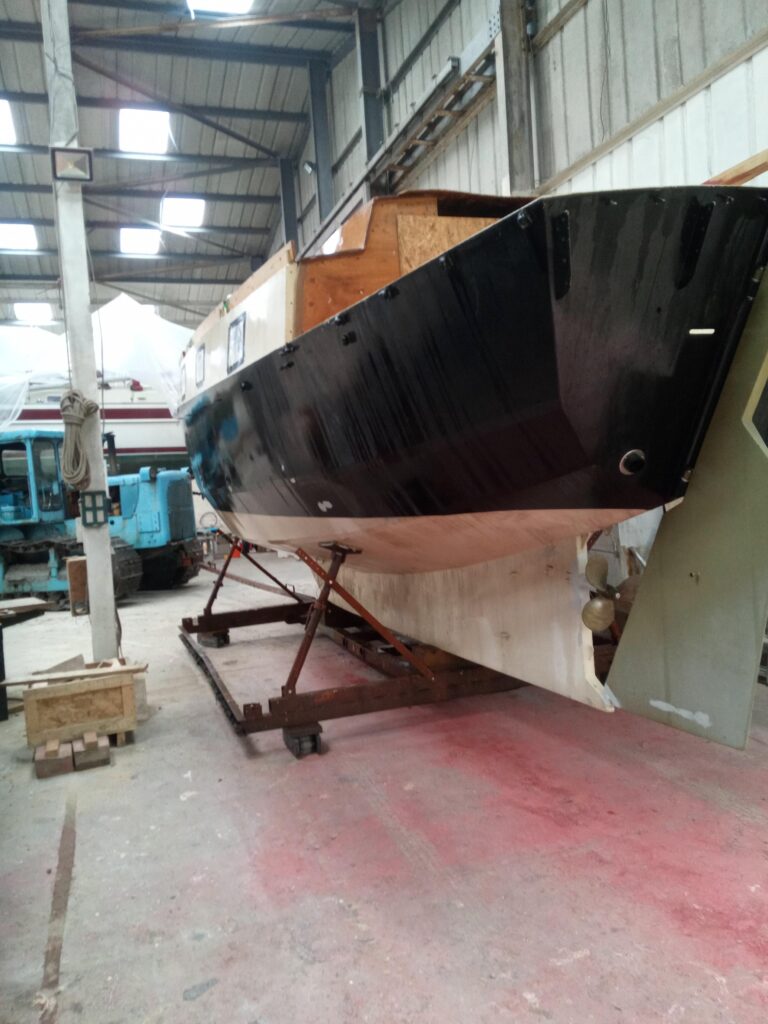
Gently round the corner 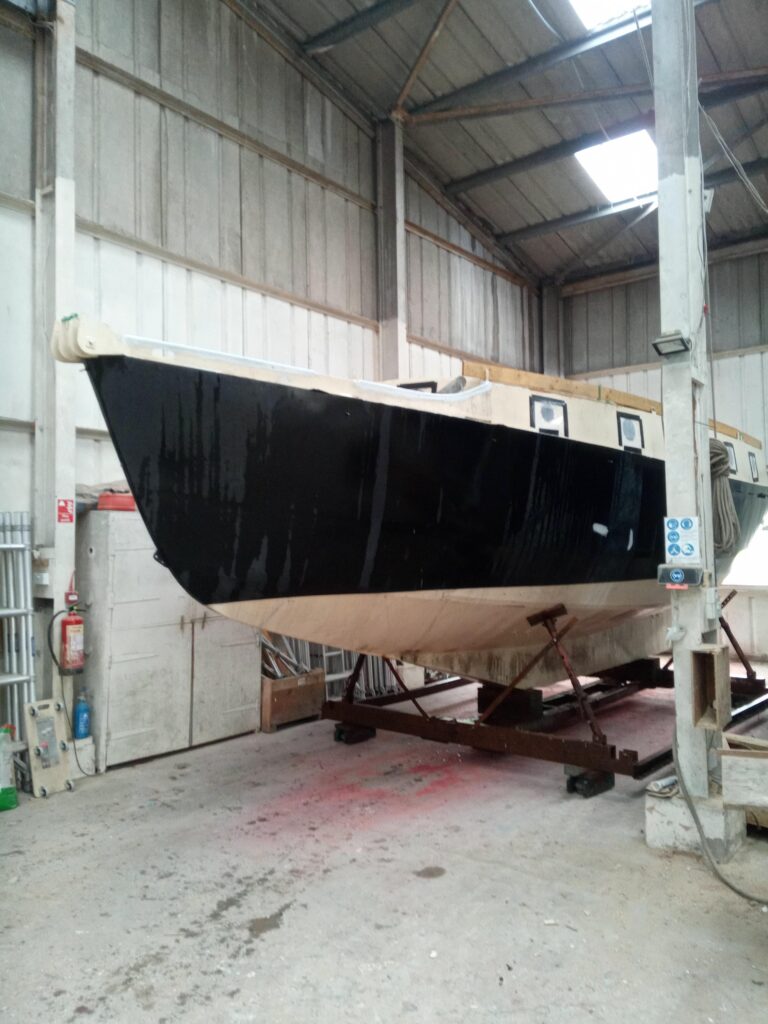
In position.
